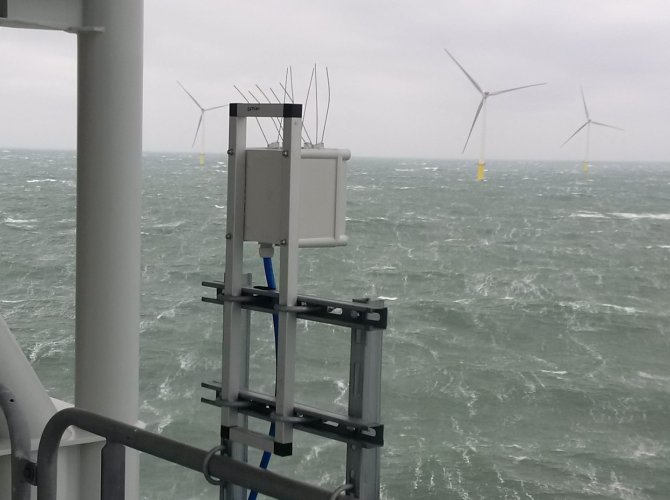News
New insights into migration of Nathusius’ pipistrelle over the North Sea can reduce bat fatalities
Four years of acoustic monitoring provides new insights into the migration of Nathusius’ pipistrelles over the North Sea. These insights are important for the development of the offshore wind sector.
Nathusius’ pipistrelles (Pipistrellus nathusii) travel long distances between their summer areas in north-eastern Europe and their winter areas in southern and western Europe. Most of the species’ seasonal movements occur over land, but migration also takes place over the Baltic Sea and the North Sea.
Wind turbines cause fatalities amongst bats. Given the prospected development of the offshore wind sector at the North Sea, it is therefore important to gather information on bat migratory movements over sea.
New insights
In the period 2017 – 2020, Wageningen Marine Research (WMR) conducted acoustic monitoring at the southern North Sea and analysed the occurrence of Nathusius’ pipistrelle in space and time during autumn migration.
This yielded several new insights according to Sander Lagerveld, researcher at WMR: “In some areas at sea more bats occur in comparison to other areas. We recorded most bat activity off the Noord Holland coast. In addition, it turned out that North Sea crossings frequently last longer than one night; the day is spent roosting at a platform, a wind turbine or a ship.”

He continues: “Migration does not only take place during nights with supportive winds: bats can also cross over sea with less than optimal wind conditions, i.e. with headwinds and crosswinds. The most remarkable result of this study was that we found a relationship with the lunar phase. Offshore bat presence is reduced shortly after full moon, whereas a sharp increase occurs just before new moon.”
Knowledge for offshore wind farms
Lagerveld: “This research shows in which areas higher and lower densities of bats can be expected during autumn migration. In addition, the relationships between the environmental variables and the occurrence of bats over the sea can be used to develop and finetune mitigation measures to reduce the number of bat fatalities."